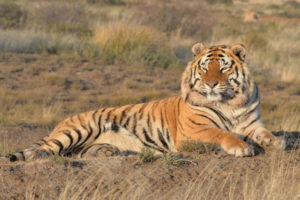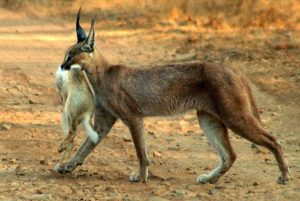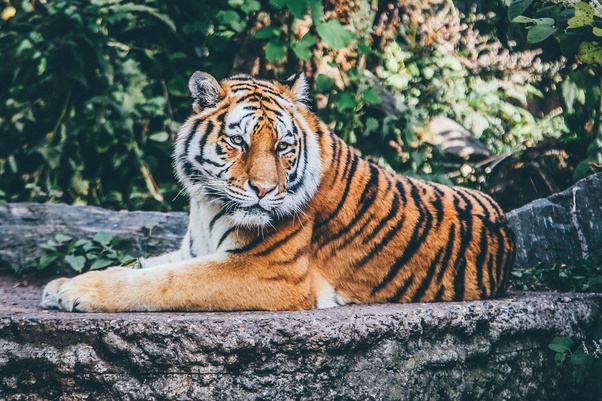Wildlife In Sariska
Sariska Tiger Reserve is well nestled in the Aravali Hills covering 800 sq km area divided into the grasslands, dry deciduous forests, sheer cliffs and rocky landscape. It is 2 most famous tiger reserve after ranthambhore where tigers population are increasing day by day . Sariska Wildlife Sanctuary is the best place for you. Nearly 90% of the area in the sanctuary is covered with dhok trees accommodating various wildlife species. A variety of other wild animals like the leopard, sambhar, chital, nilgai, four-horned antelope, wild boar, rhesus macaque, langur, hyena and jungle cats are found in the Sariska Tiger Reserve apart from the tiger. The Sariska National Park is home to India’s largest population of peafowl, and harbours quail, sand grouse, golden- backed woodpeckers and crested serpent eagles, among other species. Also the Siliserh Lake on the edge of the park has a large number of crocodiles.

The Sariska Wildlife Sanctuary houses the ruins of medieval temples of Garh-Rajor that date back to the 10th and 11th centuries. Also a 17th century castle on a hilltop at Kankwari provides a panoramic view of flying vultures and eagles. The Sariska was declared a sanctuary in 1955 and attained the status of a National Park in 1979.
About Sariska Wildlife Sanctuary :-
Sharp cliffs of hills and narrow valleys of the Aravallis dominate the landscape of Sariska, whose forests are dry and deciduous. Within the Sariska wildlife sanctuary there are the ruins of medieval temples of Garh-Rajor, belonging to the 10th and 11th centuries.

A 17th century castle on a sharp hilltop at Kankwari, provides a panoramic view of flying Egyptian vultures and eagles. The area was declared a sanctuary in 1955 and became a National Park in 1979.
Major Wildlife Attractions :-
Sariska park is home to numerous carnivores including Leopard, Wild Dog, Jungle Cat, Hyena, Jackal, and Tiger. These feed on an abundance of prey species such as Sambar, Chitel, Nilgai, Chausingha, Wild Boar and Langur. Sariska is also well known for its large population of Rhesus Monkeys, which are found in large numbers around Talvriksh.
The avian world is also well represented with a rich and varied birdlife. These include Peafowl, Grey Partridge, Bush Quail, Sand Grouse, Tree Pie, Golden backed Wood Pecker, Crested Serpent Eagle and the Great Indian Horned Owl.
However, the best way to ensure a hassle free and great tour is to get it from a tour operator which has a high level of expertise and experience in this sector. We are a leading tour operator company. Visit our website and book customize tour packages as per your demand. We never compromise in our service.
Here are some our Best tour packages for Rajasthan. Choose them any and explore the rich culture of Rajasthan with us.
Rajasthan Wildlife Tour Packages
Rajasthan Adventure Tour Packages
Rajasthan Winter Tour Packages
Rajasthan Budget Tour Packages
Rajasthan Car Rental
